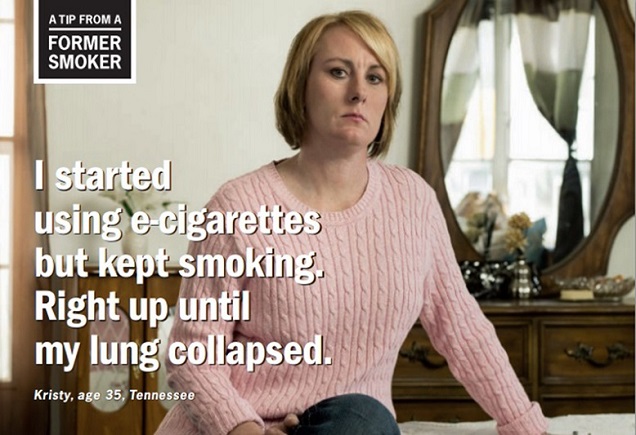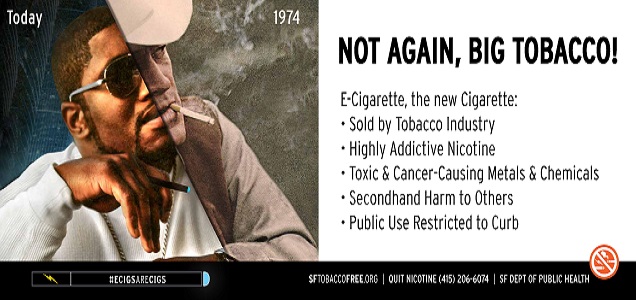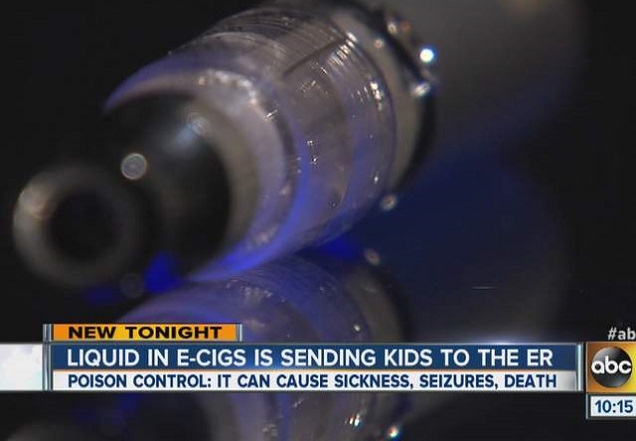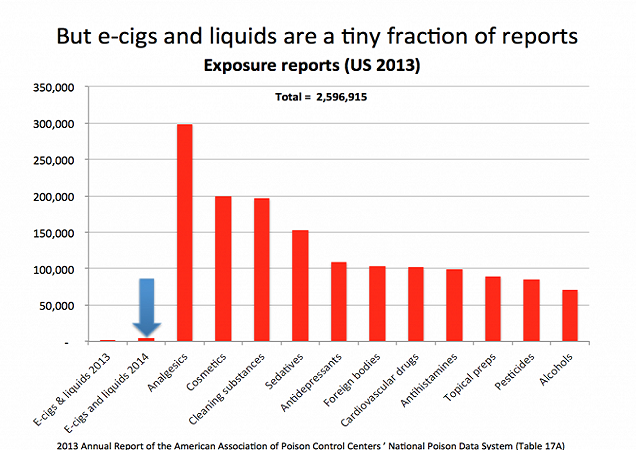
Vaping advocates spend a lot of time combating misinformation. A week hardly goes by without somebody making poorly-supported, speculative or just plain misleading statements about e-cigarettes, and the effect it’s having is very real: around half of those who’ve heard of e-cigarettes don’t believe they’re safer than cigarettes (and this belief is becoming more common in the UK too). Clearly, all the hard work we put into tackling these mistruths isn’t working. And the propaganda is still coming: the California Department of Public Health’s Still Blowing Smoke campaign and the CDC’s tips campaign are just two of the latest examples of why tobacco harm reduction is so widely misunderstood by the public.
So why is the anti-science, chemo-phobic propaganda winning the PR war over e-cigarettes, and why aren't our efforts working well enough? There are a lot of reasons, but here are some of the most important:
1 – The Climate of Uncertainty About Vaping
There is genuinely a lot we don’t know about e-cigarettes, and for those only learning bits and pieces about vaping through studies reported in the media, the science can definitely seem inconclusive. Although most findings demonstrate the reduced harm potential, the negative findings generate a lot more interest – the formaldehyde scare in contrast to the study demonstrating that e-cigs only produce substantial amounts of formaldehyde in unrealistic usage conditions, for example – and so it can seem a very uncertain issue for anybody not inclined to dig a little deeper. Moreover, almost any discussion of e-cigarettes is tempered by “concern” from “experts” about our lack of knowledge, or more commonly, about the presence of trace levels of toxic chemicals or potential for vaping to be a gateway to smoking. This climate of uncertainty gives propaganda some serious power.
2 – Familiarity and Belief: Repetition = Truth

The most basic way that truth is obscured in the e-cigarette debate is by continued repetition of ill-founded or purely hypothetical concerns, because hearing something more often makes you more likely to think it’s true. This is called the illusory-truth effect. It’s been demonstrated many times in research, and the reason that the increased familiarity increases our chances of believing something is put down (at least in part) to cognitive fluency. When we’re exposed to an idea we’ve heard before, our familiarity with it makes it easier to process, and that ease makes us believe that it's true – effectively because most people are too lazy and/or not interested enough to check the evidence.
That’s why, for example, people still mention that some e-cigs “contain diethylene glycol” despite the fact that it was only found once, in 2009, and has never been detected since, and why others continue to claim that e-cigarettes are primarily owned by tobacco companies despite this being obviously false: if people hear it enough, they really will believe it.
3 – Cognitive Fluency and the Hard Sell of Harm Reduction
The other part of cognitive fluency is that how easy something is to process affects our rating of its truth: even writing statements in an easier-to-read font or making them rhyme can make people more likely to believe them. The two sides of the e-cigarette debate are not on equal footing when it comes to ease of processing. On one hand, we have the anti-vaping narrative: tobacco companies are finding a new way to sell nicotine addiction, and since e-cigs contain carcinogens and other toxic chemicals, they’re dangerous just like cigarettes are. The pro-vaping narrative is inherently more nuanced and complicated: e-cigarettes probably aren’t harmless, but they’re much safer than cigarettes, and yes, vapers are still addicted to nicotine, but it’s better to continue that addiction in a way that probably isn’t going to kill you.

One allows you to copy-and-paste your opinion of cigarettes onto something superficially similar, whereas the other one requires comparative judgment of risk, an understanding that the mere presence of something dangerous isn’t a sign of genuine risk (for example, you’re exhaling formaldehyde right now, vaper or not), and the introduction of shades of grey into the common black-and-white “addiction is bad” viewpoint. Harm reduction is a harder sell, plain and simple.
4 – Propaganda and Striking Images

One thing you’ll notice about the Still Blowing Smoke website and previous campaigns is that they use very strong imagery. The “Mmm Formaldehyde” section of the Still Blowing Smoke site is accompanied by an image of a person wearing a gas mask, for obvious reasons, and the “Protect Your Family from E-Cigarettes” campaign featured an image of an infant’s hand holding an e-cig. Research has shown that the use of such images can impact our likelihood of believing a claim.
For example, a false claim like “magnesium is the liquid in thermometers” was ranked as more likely to be true when accompanied by a picture of a thermometer. The image provides a visual reference that makes the claim more striking and easily memorable, and in turn makes us more likely to believe it to be true.
5 – Confirmation Bias: Who Do You Listen to?
Confirmation bias is the inherent tendency to seek out information that confirms our beliefs rather than anything presenting an opposing viewpoint. It’s highly unlikely you’ve reached this part of the article if you’re not a supporter of vaping. If you’d been reading it and were opposed to vaping, you’d have identified my viewpoint and proceeded to write off everything I’ve been saying before quickly clicking away. The reason you read the websites you read – particularly on political issues – is almost definitely tied to the fact that they agree with your viewpoints.
We’re more inclined to soak up lies we agree with than deal with truths that make us question ourselves and go through the unpleasant process of holding two contradictory ideas in our heads (called cognitive dissonance).
Now put yourself in the shoes of someone who doesn’t like smoking and inherently distrusts vaping. Which information is going to be more appealing – the propaganda supporting their view or the vaping advocate trying to debunk it? The answer is obvious.
6 – Source Amnesia: “A Media Scare-Story? No, I’m Sure I Read that in a Scientific Journal”

These problems can be made even worse by “source amnesia.” Despite actively seeking out biased viewpoints, after a while we’re disturbingly likely to actually forget where the information came from, and even attribute it to a more reliable source. The inherent familiarity with anti-vaping arguments from even a thinly-disguised propaganda campaign can soon seem like a legitimate concern backed up by an unbiased report. You might read, “A teaspoon of even highly diluted e-liquid can kill a small child” in the New York Times, but soon many will feel as though this ridiculous exaggeration is as reliable as a scientific paper (you know, like the one telling us how our estimates of the toxicity of nicotine are flat-out wrong).
Similarly, many assume all of the frequently-repeated statements about the risk of e-cigarette poisonings come from reliable data, when in reality the evidence shows that e-cigs should hardly be a priority issue when it comes to poisonings:

7 – Debunking Can Increase Familiarity with the Myth
The Debunking Handbook from Skeptical Science cites a study where participants were given a flyer that addressed common myths about vaccines, and were later asked to separate the truth from the myths. Just after reading the flyer, they were great at identifying the myths, but as little as 30 minutes later some people actually did worse than before they even read the flyer. The problem is that the debunking increased familiarity with the myths, leading to cognitive fluency with the (false) ideas and therefore increasing the likelihood of saying they were true. They may have a sense that it’s actually false, but the details fade quickly.
So when we repeat anti-vaping claims to debunk them, we could well be serving to spread the misinformation, particularly for readers with no particular reason to listen to the pro-vaping side of things. The ideal solution to this is to just not repeat the myth, but obviously that’s a little hard to accomplish if you want people to know what you’re actually debunking. Instead, it’s better to focus on the facts and before you mention a myth, make sure there’s an explicit warning that what you’re about to say isn’t true.
8 – Refuting Claims with Too Much Information
Similarly, providing too much information in your rebuttal can have unwanted backfire effects. It’s tempting to think that the reason myths persist about vaping is because people who believe them lack sufficient information to come to the correct conclusion, but it’s not really that simple: brains don’t process information like a computer reading data from a hard drive.
Instead of heaping on as many counter-arguments as possible (as we’ve done in the past), it’s better to focus on a few key points that really get to the heart of what you’re putting forward. The idea is to increase the ease of processing the information: using graphics, keeping your points simple and ensuring everything is easy-to-read helps with this.
9 – Vaping Threatens World Views

In many cases, attempting to debunk a claim might threaten the world-view of the person who believes it, which can cause “backfire effects.” In many cases, the anti-smoking viewpoint is what’s threatened by vaping: the association between vaping and smoking makes vaping seem abhorrent to many.
This is the root of the whole “re-normalization” of smoking issue: vaping is seen as a way for smoking to weasel its way back into our increasingly smoke-free society because anti-smoking campaigners have tied up their (more justified) issues with combusted tobacco with all forms of nicotine use. E-cigarettes cut right to the heart of the stupidity of this view: nicotine isn’t the problem (combusted tobacco is), because nicotine can be consumed more safely. Dealing with this incongruity means either re-evaluating their whole extended “tobacco bad = nicotine bad” viewpoint (like a rational person would), or (the solution they prefer) simply claiming e-cigarettes are really bad, despite no evidence whatsoever that they are. This second solution might make no sense, but at least then precious world views remain intact.
Although this has been tried many times, the key here would be to focus on the fact that vaping is something which will help in the fight against smoking, rather than a new way for it to persist in the modern world. E-cigarettes are on their side, not a new enemy. Getting extremists to believe that will be very difficult, but the strategy may work with people who are simply misinformed on the issues.
10 – Our Rebuttals Can Leave Mental Gaps Unfilled
We all build up mental models of reality, fitting all the observed facts into a neat little narrative, and ideally one that’s easy to understand. For example, for anti-vaping campaigners, the apparent fundamental role of big tobacco in the e-cig industry means that flavors which sound as if they’d appeal to kids fit nicely into the narrative of tobacco companies being evil and luring children into nicotine addiction, apparently explaining the continuing rise in youth vaping. This is an internally-consistent viewpoint; it all works well together and forms a coherent explanation for what’s going on.
If you’ve successfully addressed a myth – for example, by providing evidence that non-smoking kids don’t care about flavors but smoking adults really do, and that only a tiny percentage of companies are owned by Big Tobacco – you may leave a hole in this narrative (not explaining the rapid rise in youth vaping, for example), and create some cognitive dissonance. This leaves the myth as still being more appealing because it offers a more complete mental model of what’s going on.
The solution to this is to always offer an alternative explanation – ideally a simple and consistent one – along with any debunking. For example, studies have shown that in a fictional murder trial, jurors are more likely to vote not guilty if an alternative suspect is accused than if reasons are simply given that the person on trial isn’t guilty.
In the youth vaping example, adding in the fact that non-smoking youth hardly ever start vaping but a lot more youth smokers are switching to vaping (alongside the minor role of tobacco companies and non-smoking youths’ lack of interest in flavors) would provide an internally-consistent explanation of what’s going on, and should be more effective at allaying concerns as a result.
Conclusion – Myths About Harm Reduction Cost Lives

With the abundance of cognitive biases exploited by propaganda campaigns and the challenges of attempting to debunk them, it’s clear we have an uphill battle. The important thing to remember is: every single smoker who’d otherwise switch but is scared away from the safer alternative because of misinformation represents a life that may end prematurely as a result. It might not be an easy task, but tackling misconceptions and debunking myths is definitely worth the effort when it comes to e-cigarettes and harm reduction overall.
All we can really do is keep going and hope that we’ll be able to undo at least some of the damage groups like the California Department of Public Health and the CDC are causing with their anti-vaping campaigns.

